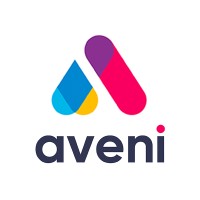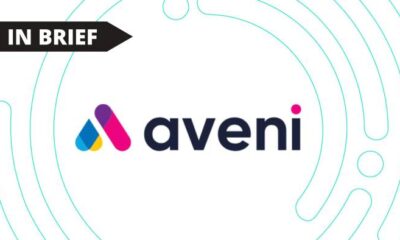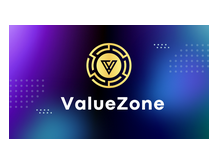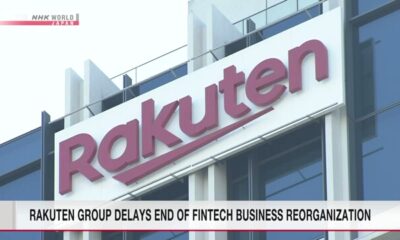Fintech
Inside Fintech’s Newest Unicorn Aven

Published on
July 18, 2024
Aven has hit a $1 billion valuation and is backed by big-name investors. But is it a good idea?
Aven cofounder and CEO Sadi Khan. (Cody Pickens for Forbes)
In 2019, Sadi Khan was in his mid-30s, had been rising through the ranks at Facebook for six years and felt ready for his own startup. He began looking for market inefficiencies that someone with tech smarts could profitably exploit. One that caught his attention related to consumer borrowing. For years, annual interest rates on credit card debt had been stubbornly high and rising, with the average now nearly 23%, or 14% over the current 8.5% prime lending rate. Meanwhile, the interest rate on home equity lines of credit (HELOCs), which treat a borrower’s home as collateral, were averaging less than 1% above prime, according to data from Intercontinental Exchange.
Why didn’t more consumers tap into low-rate HELOCs instead of carrying high-rate credit card debt? A big reason, Khan concluded, was convenience–it took a “ridiculous” amount of paperwork and time (often four weeks or longer) to set up a HELOC. What if he could use technology to speed up the HELOC approval process and then inject that borrowing power into a credit card, making home equity lines easier to both obtain and draw down?
Five years on, after painstaking product development, Khan’s brainchild, Aven, has 33,000 customers for its HELOC credit card and has issued $1.5 billion in credit lines. Revenue has more than tripled over the past year at the 53-person startup and is now running above $100 million on an annualized basis. Aven’s Home Card is already available in 32 states, and Khan plans to reach all 50 by the end of this year.
 Cody Pickens for Forbes
Cody Pickens for Forbes
Just as notable, in a currently depressed market for fintech funding, the Campbell, California, startup just raised $142 million in Series D venture investment at a $1 billion valuation. Backers in the funding round include big names: Khosla Ventures, General Catalyst, Caffeinated Capital, Electric Capital, Founders Fund and The General Partnership.
Along with dollars, Aven is attracting some outsized Silicon Valley hype. “I was an early investor in Square, Stripe and Affirm,” says billionaire venture capitalist Vinod Khosla, who first backed Aven during its second funding round in November 2020. “Five years from now, I’ll be saying Square, Stripe, Affirm and Aven.”
While his startup isn’t yet profitable, Khan says Aven is burning less than $5 million a month in cash and expects to be cash-flow positive in about six months.
Until now, Khan himself has never done a press interview about Aven. “Frankly, we were just very focused on building the product,” he says. “We tried to stay heads-down.” But in conversations with Forbes, he opened up about his company’s history and prospects and offered a spirited defense of why his novel product is good for borrowers—despite doubts by some consumer advocates who worry folks will be tempted to borrow and spend recklessly against their home equity, putting their houses at risk.
Khan’s main response to the consumer-protection crowd: Aven caters to high-earning, responsible borrowers, with the typical customer having income above $100,000 and a “super-prime” FICO credit score north of 720. In return for putting their equity and homes on the line, these customers are getting lower interest rates and convenience. Aven’s current rate, which fluctuates based on the Federal Funds overnight interest rate, ranges from 7.99% to 15.49%—among the lowest rates for HELOCs available in the U.S. when comparing borrowers with similar FICO scores, Khan claims.
The lines range from $5,000 up to $250,000, and as with traditional HELOCs, it’s up to borrowers how much of a line they want to draw down. But in contrast to traditional HELOCs, customers don’t pay an appraisal or origination fee when the line is granted. Instead, they only pay a fee of 2.5% on cash they take against their line and on balance transfers; they receive a 2% cash-back reward on all purchases made with the card.
Khan insists his customers don’t typically use the card for “gas and groceries” but for home improvement projects, debt consolidation or big expenses like kids’ summer camp—in other words, the sort of major expenditures traditional HELOCs are tapped for. Merchant categories where the Aven card can’t be used include casinos, lotteries, gambling websites and crypto brokerages, but those restrictions can be circumvented if customers take cash withdrawals.
Gamble away your home equity? “If you’re irresponsible, this is not the product for you,” declares the 39-year-old CEO, who likes to wear the same thing every day—a black long-sleeve t-shirt and Patagonia vest—“to reduce daily decisions.”
Sadi Khan was born in Bangladesh and raised in Toronto and then Florida, the child of two immigrant civil engineers. A Canadian citizen, he returned to Canada and attended the University of Waterloo in Ontario to study quantum computing and physics, but he switched his major to electrical and computer engineering after concluding it was more practical. (Waterloo is known for its physics research as well as for producing tech entrepreneurs.)
After graduation in 2008, Khan spent a few years at Microsoft before joining Facebook in 2013. There, he worked on projects like Facebook’s search function and map features and became the lead product manager of Internet.org—Mark Zuckerberg’s effort to partner with telecommunications firms in emerging markets like Kenya and India to provide free Internet access. Internet.org was heavily criticized for only letting people access Facebook and a limited set of other approved sites and was banned by India in 2016. “It had its controversies, much like almost any other project Facebook does,” Khan says. “But we helped connect an enormous amount of people in the world to the Internet for the first time, and I was very honored to have worked on it.”
He left Facebook in 2019 to start Aven with software engineer and entrepreneur Murtada Shah (also a Canadian) and graphic designer Collin Wikman, who previously worked at Square. Avichal Garg, a cryptocurrency-focused venture capitalist at Electric Capital who had managed Khan at Facebook and strongly encouraged him to start his own company, became one of Aven’s first investors.
After hitting on his HELOC credit card idea, Khan started by researching a foundational question: Is this legal? He read the entire 2010 Dodd-Frank Wall Street Reform and Consumer Protection Act, the landmark law aimed at preventing the excessive risk taking that caused the financial crisis, spending weeks on the relevant pieces of the 850-page document. He started talking to lawyers and ultimately turned to Arnold & Porter, the big, Washington, D.C.-heavy law firm where former U.S. Senator Chris Dodd (of Dodd-Frank fame) was and still is senior counsel. The firm produced an unofficial memo—Khan acknowledges it wasn’t a formal legal opinion—saying there were no legal prohibitions on a credit card backed by a home equity loan. A representative from Arnold & Porter declined to comment.
Khan studied home equity loans for about five months before starting Aven in 2019. “It behooves us to make sure we understand a domain very, very deeply,” he says. After concluding his product would fly legally, he spent nearly two years building the technical infrastructure and securing the capital, finally releasing the Aven credit card in 2022. “You really have to grind out, inch by inch, every piece of this origination funnel,” he says.
As Khan saw it, what made HELOCs such a ripe target for fintech disruption was how inconvenient they could be to use. A HELOC can still take a month to secure from a traditional bank and like a mortgage, comes with many forms to fill out, plus origination and closing fees. To get a loan, you often need to explain how you want to use the money, and sometimes you must call the bank every time you want to draw some of it down. According to the FDIC, Americans currently have $458 billion in unused home equity lines they haven’t drawn down, in addition to $270 billion in HELOC loans outstanding.
Khan says Aven shrinks the time to apply for a HELOC to as little as 15 minutes. His software sprints through a dizzying set of steps. It collects customers’ basic information, assesses their home’s value based on automated valuation models from data providers like CoreLogic, runs a title and lien search by looking up millions of permutations and pulling in information from more data providers, evaluates borrowers’ risk of default by verifying their income, schedules a signing ceremony with a digital notary, conducts a closing through that notary after customers’ identities have been verified and finally files and secures the lien or legal claim on their property. Aven declined to disclose how long the entire closing process typically takes.
After approval, there’s a mandatory three-day waiting period, required by federal regulation for all HELOCs, during which a customer can cancel the loan, and then most people can immediately withdraw funds from the Aven app. The card typically arrives a few days after the three-day rescission period ends.
“There’s strong demand for something that’s quick, simple and easy,” says Aven backer and Notable Capital managing partner Hans Tung. “I don’t think you can find any other company in the country that can originate a HELOC in 30 minutes or less,” adds Jeremy Solomon, an Aven investor who helped launch the startup but left the company after less than a year to become a venture capitalist at NYCA Partners.
Now, with his underwriting systems in place, Khan has already started offering auto-backed loans in two states, and by the end of the year, he plans to roll them out more broadly and launch a mortgage-refinancing product. He’s also created a free Aven Advisor app that helps people track their personal balance sheet, including all their debts, and has attracted 160,000 registered users. Some day that could be used to market Aven’s products–just as the Empower (previously Personal Capital) free net-worth tracking app has been used as a source of client leads for its wealth management business.
The idea of grafting a credit card onto a HELOC isn’t entirely new. Credit card behemoth Capital One tried it roughly two decades ago. But they found it too costly to originate the loans and abandoned the effort, according to Khan, who says he spoke with the team that worked on the endeavor. (A Capital One representative declined to comment.)
Nor is Aven the only fintech speeding up the HELOC process. Figure, the San Francisco startup created by SoFi cofounder Mike Cagney and now led by former Brex chief operating officer Michael Tannenbaum, launched an online HELOC product in 2018 and has since grown quickly. It has issued $10 billion in loans through its app and website, but doesn’t offer a credit card. Tannenbaum says it takes customers nine days on average to receive their Figure loans.
Like any good fintech CEO, Khan talks a big game about how he’s using technology to lower prices for consumers, saying how Aven has reduced loan origination costs “by orders of magnitude” compared with traditional HELOCs. He goes a step further in an Aven press release, saying, “We believe there’s no reason for anyone who owns an asset and has good credit history to use unsecured credit. Full stop. Unsecured credit is expensive and unhealthy.” Khan says he’s so confident that his interest rates are among the nation’s lowest that Aven offers $100 to anyone who can find a HELOC with a lower permanent APR interest rate (excluding temporary teaser rates). He claims only 0.02% of Aven’s applicants have been able to track one down.
Aven’s 7.99% to 15.49% variable interest rates are similar to Figure’s 7.4% to 15.4%, and the two companies’ average interest rates are close. But the two products are very different. Figure requires you to draw down the entire credit line after you’re approved, and its loan comes with a fixed, not a variable, interest rate. After you’ve paid down the loan, you can re-draw additional funds from Figure, which might come at a different interest rate. Figure also levies a sizable origination fee of 1.5% to 4.99% (depending on your state, credit profile and whether you want to buy down your interest rate), in addition to smaller one-off fees sometimes required for assessing your home’s value or getting a notarized signing.
Beyond its interest rate, Aven’s only fees are for late payments ($29) and the 2.5% it charges for cash withdrawals and for balances moved from other credit cards (a necessary step if a customer is using Aven for debt consolidation). Those using the card for major home improvements will likely have to withdraw cash, since a builder may not want to accept a credit card. The startup also sets daily and weekly card spending limits “as security measures, just like any other card.” Cash, which is withdrawn through the app, doesn’t have a daily limit.
Note that while interest you pay on a normal credit card is never deductible, interest on a traditional or Aven HELOC may be deductible to the extent you use the borrowed money to “buy, build or substantially improve” your home.
Since Aven isn’t a bank, it partners with Everett, Washington-based Coastal Community Bank to issue its cards and originate its loans. The fintech-bank sponsorship model has come under fire from regulators who have alleged, in enforcement actions, that certain small banks aren’t properly monitoring the risk in these relationships or whether their fintech partners are complying with certain banking rules, such as those designed to curb money laundering. Such concerns have been heightened by the recent collapse of Synapse, an intermediary between fintechs and banks.
Coastal Community Bank hasn’t publicly been in regulators’ crosshairs recently, though it has ended a relationship with at least one fintech customer that was accused of having accounts with rampant fraudulent activity. “We’ve been very fortunate to work with Coastal Community Bank, and it’s been a great partnership because we’re very aligned on our values,” Khan says. “We take our compliance and regulatory requirements very seriously as a company, and so does Coastal.”
If you miss a payment on your Aven card, you go through the same process you would with a traditional mortgage or HELOC, Khan says. It’s a six-month period where Aven “attempts to help the consumer recover and get back into a reasonable state.” Aven has had to force customers into foreclosure “a number of times,” and its default and delinquency rates are “in-line” with those of traditional HELOCs when you compare consumers with similar FICO scores, Khan says.
In the first quarter of 2024, 0.52% of HELOC holders were more than 90 days’ delinquent on their loans, according to the Federal Reserve, compared with 0.92% for mortgage holders and 6.86% for credit card users. (Khan declined to share Aven’s specific delinquency or default rates.)
In today’s overcrowded, me-too business of fintech, it pays to have a distinct focus. For example, Chime, the nation’s largest and most successful digital bank, has grown by targeting low- and moderate-income folks who weren’t well served by conventional banks.
Aven, for its part, is mining an untapped niche among higher-income Americans with super-prime credit scores and lots of borrowing and credit card options, many of whom are in their late forties. According to the Federal Reserve’s latest survey, nearly two-thirds of American households with incomes above $100,000 pay off their credit card balances every month. They use their cards for convenience and the perks they get back, making them less profitable than customers who pay interest. But the majority of Aven’s users do carry a balance every month—albeit at a lower interest rate than what’s typical for credit cards.
So Aven makes money on the interest customers pay on their loans, sharing that income with its bank partner. It also earns revenue through interchange, the 2%-plus fees merchants pay when consumers swipe their Aven cards, as well as the 2.5% fee it charges when people take cash withdrawals and balance transfers. Since it lacks a bank charter and doesn’t hold customer deposits, it funds its loans through warehouse lines of credit provided by banks. Such funding typically costs 2% to 3% more than the Secured Overnight Financing Rate (SOFR), or about 7% to 8% today, according to an industry expert. (Khan declined to disclose Aven’s cost of capital.)
Given Aven’s $100-million plus in revenue and $1 billion valuation, we estimate its valuation multiple at between seven- and ten-times revenue. That’s much lower than the fintech go-go days of 2021, when some companies were fetching 50-times’ revenue, but higher than publicly traded fintech lenders like SoFi and Upstart, which trade at about two to four times’ revenue, according to FactSet.
There is, of course, a big underlying risk here, should regulators or the public turn against the idea of borrowing large amounts against home equity with a credit card. Andrew Pizor, a senior attorney at the National Consumer Law Center, a consumer protection nonprofit, is concerned that Aven is encouraging people to use the card for ordinary daily purchases. “It seems they’re marketing it as a credit card that has a lower interest rate, and I don’t think it should be compared with other credit cards. It should be compared with other HELOCs because it’s secured by your house,” he says. “A home is an important asset. You don’t want to endanger it lightly.” Matthew Pillmore, a personal finance influencer, said of Aven in a September 2023 review, “I hate this HELOC because it is designed to be used recklessly.”
While Khan says Aven’s default rates are similar to those of traditional HELOCs when comparing borrowers with similar FICO scores, if he starts lending to consumers with a lower credit profile to juice growth, defaults and foreclosures could spike. “It’s a technical lending business, and giving away money is the easy part,” says a fintech investor and former lending executive who doesn’t have a stake in Aven.
Khan has gotten comfortable with the risks–he thinks he can control them with data and technology and that his customers can handle the responsibility. “Our credit card is not for everyone,” he says. “We take an enormous amount of care in underwriting who is even eligible for our product, down to the dollar of income verification to make sure this person has the ability to pay.” If it can keep defaults low–a big if, to be sure–Aven has discovered a novel way to lower borrowing costs for higher-income consumers.
This article was originally published on forbes.com and all figures are in USD.
Are you – or is someone you know -creating the next Afterpay or Canva? Nominations are open for Forbes Australia’s first 30 under 30 list. Entries close midnight, July 31, 2024.
Look back on the week that was with hand-picked articles from Australia and around the world. Sign up to the Forbes Australia newsletter here or become a member here.
Fintech
US Agencies Request Information on Bank-Fintech Dealings

Federal banking regulators have issued a statement reminding banks of the potential risks associated with third-party arrangements to provide bank deposit products and services.
The agencies support responsible innovation and banks that engage in these arrangements in a safe and fair manner and in compliance with applicable law. While these arrangements may offer benefits, supervisory experience has identified a number of safety and soundness, compliance, and consumer concerns with the management of these arrangements. The statement details potential risks and provides examples of effective risk management practices for these arrangements. Additionally, the statement reminds banks of existing legal requirements, guidance, and related resources and provides insights that the agencies have gained through their oversight. The statement does not establish new supervisory expectations.
Separately, the agencies requested additional information on a broad range of arrangements between banks and fintechs, including for deposit, payment, and lending products and services. The agencies are seeking input on the nature and implications of arrangements between banks and fintechs and effective risk management practices.
The agencies are considering whether to take additional steps to ensure that banks effectively manage the risks associated with these different types of arrangements.
SUBSCRIBE TO THE NEWSLETTER
And get exclusive articles on the stock markets
Fintech
What changes in financial regulation have impacted the development of financial technology?

Exploring the complex landscape of global financial regulation, we gather insights from leading fintech leaders, including CEOs and finance experts. From the game-changing impact of PSD2 to the significant role of GDPR in data security, explore the four key regulatory changes that have reshaped fintech development, answering the question: “What changes in financial regulation have impacted fintech development?”
- PSD2 revolutionizes access to financial technology
- GDPR Improves Fintech Data Privacy
- Regulatory Sandboxes Drive Fintech Innovation
- GDPR Impacts Fintech Data Security
PSD2 revolutionizes access to financial technology
When it comes to regulatory impact on fintech development, nothing comes close to PSD2. This EU regulation has created a new level playing field for market players of all sizes, from fintech startups to established banks. It has had a ripple effect on other markets around the world, inspiring similar regulatory frameworks and driving global innovation in fintech.
The Payment Services Directive (PSD2), the EU law in force since 2018, has revolutionized the fintech industry by requiring banks to provide third-party payment providers (TPPs) with access to payment services and customer account information via open APIs. This has democratized access to financial data, fostering the development of personalized financial instruments and seamless payment solutions. Advanced security measures such as Strong Customer Authentication (SCA) have increased consumer trust, pushing both fintech companies and traditional banks to innovate and collaborate more effectively, resulting in a dynamic and consumer-friendly financial ecosystem.
The impact of PSD2 has extended beyond the EU, inspiring similar regulations around the world. Countries such as the UK, Australia and Canada have launched their own open banking initiatives, spurred by the benefits seen in the EU. PSD2 has highlighted the benefits of open banking, also prompting US financial institutions and fintech companies to explore similar initiatives voluntarily.
This has led to a global wave of fintech innovation, with financial institutions and fintech companies offering more integrated, personalized and secure services. The EU’s leadership in open banking through PSD2 has set a global standard, promoting regulatory harmonization and fostering an interconnected and innovative global financial ecosystem.
Looking ahead, the EU’s PSD3 proposals and Financial Data Access (FIDA) regulations promise to further advance open banking. PSD3 aims to refine and build on PSD2, with a focus on improving transaction security, fraud prevention, and integration between banks and TPPs. FIDA will expand data sharing beyond payment accounts to include areas such as insurance and investments, paving the way for more comprehensive financial products and services.
These developments are set to further enhance connectivity, efficiency and innovation in financial services, cementing open banking as a key component of the global financial infrastructure.
General Manager, Technology and Product Consultant Fintech, Insurtech, Miquido
GDPR Improves Fintech Data Privacy
Privacy and data protection have been taken to another level by the General Data Protection Regulation (GDPR), forcing fintech companies to tighten their data management. In compliance with the GDPR, organizations must ensure that personal data is processed fairly, transparently, and securely.
This has led to increased innovation in fintech towards technologies such as encryption and anonymization for data protection. GDPR was described as a top priority in the data protection strategies of 92% of US-based companies surveyed by PwC.
Financial Expert, Sterlinx Global
Regulatory Sandboxes Drive Fintech Innovation
Since the UK’s Financial Conduct Authority (FCA) pioneered sandbox regulatory frameworks in 2016 to enable fintech startups to explore new products and services, similar frameworks have been introduced in other countries.
This has reduced the “crippling effect on innovation” caused by a “one size fits all” regulatory approach, which would also require machines to be built to complete regulatory compliance before any testing. Successful applications within sandboxes give regulators the confidence to move forward and address gaps in laws, regulations, or supervisory approaches. This has led to widespread adoption of new technologies and business models and helped channel private sector dynamism, while keeping consumers protected and imposing appropriate regulatory requirements.
Co-founder, UK Linkology
GDPR Impacts Fintech Data Security
A big change in financial regulations that has had a real impact on fintech is the 2018 EU General Data Protection Regulation (GDPR). I have seen how GDPR has pushed us to focus more on user privacy and data security.
GDPR means we have to handle personal data much more carefully. At Leverage, we have had to step up our game to meet these new rules. We have improved our data encryption and started doing regular security audits. It was a little tricky at first, but it has made our systems much more secure.
For example, we’ve added features that give users more control over their data, like simple consent tools and clear privacy notices. These changes have helped us comply with GDPR and made our customers feel more confident in how we handle their information.
I believe that GDPR has made fintech companies, including us at Leverage, more transparent and secure. It has helped build trust with our users, showing them that we take data protection seriously.
CEO & Co-Founder, Leverage Planning
Related Articles
Fintech
M2P Fintech About to Raise $80M

Application Programming Interface (API) Infrastructure Platform M2P Financial Technology has reached the final round to raise $80 million, at a valuation of $900 million.
Specifically, M2P Fintech, formerly known as Yap, is closing a new funding round involving new and existing investors, according to entrackr.com. The India-based company, which last raised funding two and a half years ago, previously secured $56 million in a round led by Insight Partners, earning a post-money valuation of $650 million.
A source indicated that M2P Fintech is ready to raise $80 million in this new funding round, led by a new investor. Existing backers, including Insight Partners, are also expected to participate. The new funding is expected to go toward enhancing the company’s technology infrastructure and driving growth in domestic and international markets.
What does M2P Fintech do?
M2P Fintech’s API platform enables businesses to provide branded financial services through partnerships with fintech companies while maintaining regulatory compliance. In addition to its operations in India, the company is active in Nepal, UAE, Australia, New Zealand, Philippines, Bahrain, Egypt, and many other countries.
Another source revealed that M2P Fintech’s valuation in this funding round is expected to be between USD 880 million and USD 900 million (post-money). The company has reportedly received a term sheet and the deal is expected to be publicly announced soon. The Tiger Global-backed company has acquired six companies to date, including Goals101, Syntizen, and BSG ITSOFT, to enhance its service offerings.
According to TheKredible, Beenext is the company’s largest shareholder with over 13% ownership, while the co-founders collectively own 34% of the company. Although M2P Fintech has yet to release its FY24 financials, it has reported a significant increase in operating revenue. However, this growth has also been accompanied by a substantial increase in losses.
Fintech
Scottish financial technology firm Aveni secures £11m to expand AI offering

By Gloria Methri
Today
- To come
- Aveni Assistance
- Aveni Detection
Artificial intelligence Financial Technology Aveni has announced one of the largest Series A investments in a Scottish company this year, amounting to £11 million. The investment is led by Puma Private Equity with participation from Par Equity, Lloyds Banking Group and Nationwide.
Aveni combines AI expertise with extensive financial services experience to create large language models (LLMs) and AI products designed specifically for the financial services industry. It is trusted by some of the UK’s leading financial services firms. It has seen significant business growth over the past two years through its conformity and productivity solutions, Aveni Detect and Aveni Assist.
This investment will enable Aveni to build on the success of its existing products, further consolidate its presence in the sector and introduce advanced technologies through FinLLM, a large-scale language model specifically for financial services.
FinLLM is being developed in partnership with new investors Lloyds Banking Group and Nationwide. It is a large, industry-aligned language model that aims to set the standard for transparent, responsible and ethical adoption of generative AI in UK financial services.
Following the investment, the team developing the FinLLM will be based at the Edinburgh Futures Institute, in a state-of-the-art facility.
Joseph Twigg, CEO of Aveniexplained, “The financial services industry doesn’t need AI models that can quote Shakespeare; it needs AI models that deliver transparency, trust, and most importantly, fairness. The way to achieve this is to develop small, highly tuned language models, trained on financial services data, and reviewed by financial services experts for specific financial services use cases. Generative AI is the most significant technological evolution of our generation, and we are in the early stages of adoption. This represents a significant opportunity for Aveni and our partners. The goal with FinLLM is to set a new standard for the controlled, responsible, and ethical adoption of generative AI, outperforming all other generic models in our select financial services use cases.”
Previous Article
Network International and Biz2X Sign Partnership for SME Financing
IBSi Daily News Analysis

SMBs Leverage Cloud to Gain Competitive Advantage, Study Shows
IBSi FinTech Magazine

- The Most Trusted FinTech Magazine Since 1991
- Digital monthly issue
- Over 60 pages of research, analysis, interviews, opinions and rankings
- Global coverage
subscribe now
-

 DeFi12 months ago
DeFi12 months agoDeFi Technologies Appoints Andrew Forson to Board of Directors
-

 Fintech12 months ago
Fintech12 months agoUS Agencies Request Information on Bank-Fintech Dealings
-

 News1 year ago
News1 year agoBlock Investors Need More to Assess Crypto Unit’s Earnings Potential, Analysts Say — TradingView News
-

 DeFi12 months ago
DeFi12 months agoSwitchboard Revolutionizes DeFi with New Oracle Aggregator
-

 DeFi12 months ago
DeFi12 months agoIs Zypto Wallet a Reliable Choice for DeFi Users?
-

 News1 year ago
News1 year agoBitcoin and Technology Correlation Collapses Due to Excess Supply
-

 Fintech12 months ago
Fintech12 months agoWhat changes in financial regulation have impacted the development of financial technology?
-

 Fintech12 months ago
Fintech12 months agoScottish financial technology firm Aveni secures £11m to expand AI offering
-

 Fintech12 months ago
Fintech12 months agoScottish financial technology firm Aveni raises £11m to develop custom AI model for financial services
-

 News1 year ago
News1 year agoValueZone launches new tools to maximize earnings during the ongoing crypto summer
-

 Videos5 months ago
Videos5 months ago“Artificial intelligence is bringing us to a future that we may not survive” – Sco to Whitney Webb’s Waorting!
-

 DeFi1 year ago
DeFi1 year agoTON Network Surpasses $200M TVL, Boosted by Open League and DeFi Growth ⋆ ZyCrypto















